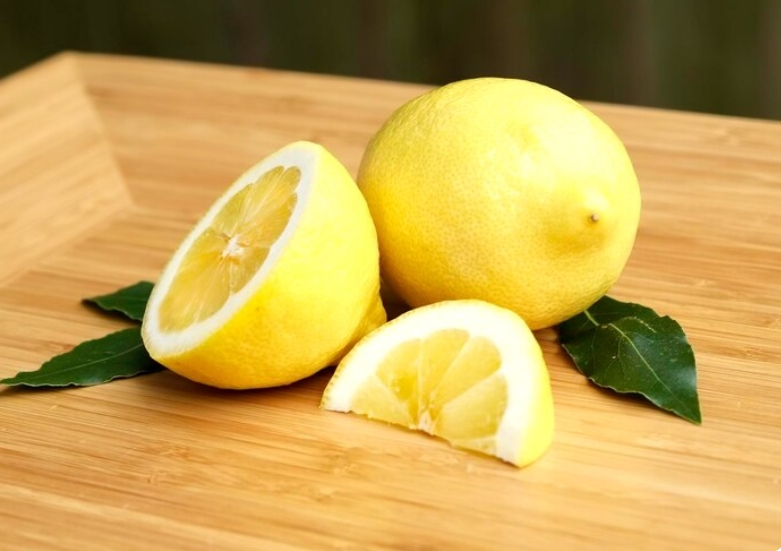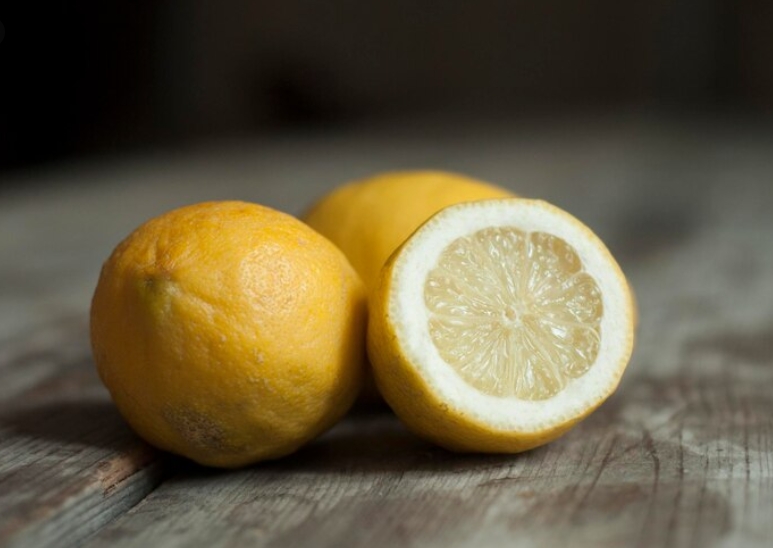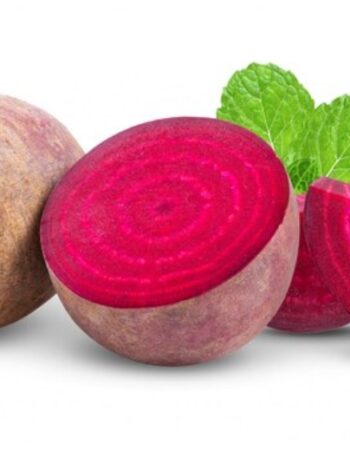The Zesty Citrus Fruit with a Global Appeal – The lemon, scientifically known as Citrus limon, is one of the most widely recognized and cherished citrus fruits in the world. Known for its bright yellow color, refreshing aroma, and distinctive tart flavor, the lemon has played a significant role in culinary traditions, agriculture, and culture for centuries. This article explores the fascinating history, botanical profile, cultivation practices, culinary versatility, and cultural importance of the lemon, offering a comprehensive introduction to this beloved fruit.
Origins and Historical Journey
The lemon’s exact origin remains a subject of debate among botanists and historians, but it is generally believed to have originated in the regions of Northeast India, northern Burma (Myanmar), and China. From there, it spread westward into the Middle East and the Mediterranean.
Historical records indicate that lemons were cultivated in the Mediterranean by the first century AD. The fruit gained prominence through trade routes established by Arab merchants, who brought lemons to the Mediterranean basin and Europe during the early Middle Ages. Lemons were not only appreciated for their culinary uses but also for their medicinal properties and as a preservative.
By the time of the Renaissance, lemons had become widely cultivated throughout Italy, Spain, and other Mediterranean countries. Explorers and colonizers introduced lemons to the Americas during the 15th and 16th centuries, expanding their global reach. Today, lemons are grown in subtropical and tropical regions worldwide, with major producers including India, Mexico, Italy, Spain, and the United States.
Botanical Characteristics
The lemon belongs to the Rutaceae family, which includes other citrus fruits such as oranges, limes, and grapefruits. The lemon tree is a small evergreen tree or shrub that typically grows between 10 to 20 feet tall, depending on the variety and growing conditions.
Lemon trees have glossy, dark green leaves with a distinct aromatic quality when crushed. The branches often bear sharp thorns, although some cultivated varieties have been bred to reduce thorniness for easier harvesting.
The fruit itself is a hesperidium, a type of berry with a thick, aromatic rind and segmented juicy pulp inside. The outer skin, or zest, contains essential oils that contribute to the lemon’s fragrant aroma. The color of the fruit varies from greenish-yellow to bright yellow when fully ripe.
Lemons typically have a round to oval shape, sometimes with a nipple-like protrusion at the blossom end. The pulp is pale yellow and divided into 8 to 12 segments filled with juice sacs. Lemon trees bloom throughout the year in favorable climates, producing white flowers with purple tinges and a sweet fragrance.

Varieties of Lemons
There are several lemon varieties cultivated globally, each with unique characteristics suited to different climates and uses. Some of the most popular varieties include:
- Eureka: One of the most commonly grown lemons worldwide, Eureka lemons have thick skin and a tangy, acidic flavor. They are available year-round and often seen in grocery stores.
- Lisbon: Similar to Eureka but typically thornier, Lisbon lemons are hardy and productive, favored in commercial agriculture.
- Meyer Lemon: A hybrid between a lemon and a mandarin orange, Meyer lemons are sweeter, less acidic, and have thinner skin. They are prized in gourmet cooking and as ornamental trees.
- Ponderosa: Known for their large size and thick rind, Ponderosa lemons are often grown as novelty plants or in gardens.
Each variety serves different market needs, from commercial juice production to fresh fruit sales and culinary specialties.
Cultivation and Growing Conditions
Lemons thrive in subtropical and Mediterranean climates where winters are mild, and summers are warm but not excessively hot. Ideal growing conditions include well-drained, slightly acidic soil rich in organic matter. Lemon trees require full sun exposure and protection from frost, which can damage blossoms and fruit.
Propagation is commonly done through grafting, where a scion from a desirable lemon variety is grafted onto rootstock that is hardy and disease-resistant. This ensures consistent fruit quality and tree vigor.
Lemon trees begin to bear fruit about two to three years after planting and can produce fruit throughout the year in suitable climates. Proper irrigation, fertilization, and pruning are essential to maintain tree health and maximize yields. Lemon cultivation also involves pest and disease management, addressing common issues such as citrus greening disease, aphids, and fungal infections.
Harvesting and Post-Harvest Handling
Lemons are harvested once they reach their characteristic yellow color and desired size. The fruit is usually picked by hand to avoid damage. Harvest timing is critical, as lemons do not continue to ripen significantly after picking.
After harvesting, lemons are sorted, washed, and often waxed to enhance appearance and prolong shelf life. They are then packed for fresh market sales or processed for juice and oil extraction.
Lemons can be stored for several weeks under proper refrigeration. Their durability and long shelf life make them an important commercial crop with extensive export markets.

Culinary Uses of Lemons
The lemon’s bright, tart flavor and aromatic zest have made it a kitchen staple worldwide. Its culinary uses are diverse and span across many types of cuisines:
- Juice: Freshly squeezed lemon juice is used to add acidity and brightness to beverages, dressings, marinades, sauces, and desserts. It is a key ingredient in lemonade, cocktails, and many classic dishes.
- Zest: The outer peel, or zest, contains fragrant oils and is used to impart flavor to baked goods, salads, and savory dishes. Lemon zest adds a fresh citrus note without the sourness of the juice.
- Whole Fruit: Lemons are also preserved whole or in slices, used in pickling and garnishing. Preserved lemons are a staple in North African and Middle Eastern cooking.
- Cooking: Lemon pairs well with fish, poultry, vegetables, and grains. Its acidity helps balance rich and fatty foods, enhances flavors, and tenderizes meat.
- Baking: Lemon is a common flavor in cakes, pies, cookies, and custards, prized for its ability to brighten sweet dishes.
The versatility of lemons makes them indispensable in both home kitchens and professional culinary settings.
Cultural Significance and Symbolism
Lemons have long held cultural and symbolic meaning in many societies. In Mediterranean cultures, lemons are associated with freshness, purity, and cleansing. They are often used in rituals and traditional medicine.
In art and literature, lemons symbolize zest, vitality, and sometimes bitterness or cleansing. The bright yellow color evokes sunshine and energy, often used metaphorically to represent optimism and renewal.
Lemon trees are also popular ornamental plants, grown in gardens and courtyards for their fragrant flowers and vibrant fruit. The image of lemon groves has become synonymous with certain regions, such as the Amalfi Coast in Italy, where lemon cultivation is an integral part of local identity and economy.
Economic Importance
Lemon cultivation is a significant agricultural industry worldwide. Major producing countries include India, Mexico, Argentina, Spain, and the United States (particularly California and Florida). Lemons are cultivated both for fresh consumption and processing into juice, essential oils, and flavorings.
The global demand for lemons remains strong due to their culinary versatility and year-round availability in many regions. Lemon exports support local economies and provide income for millions of farmers and workers involved in planting, harvesting, processing, and distribution.
Advances in agricultural technology, pest management, and post-harvest handling continue to improve lemon yields and quality, helping to meet consumer demand sustainably.
Environmental Considerations
As with many fruit crops, lemon cultivation requires careful management to minimize environmental impact. Sustainable farming practices include efficient water use, integrated pest management, organic fertilization, and soil conservation.
Lemon trees can also contribute to carbon sequestration and biodiversity when grown as part of diversified agroecosystems. The challenge remains to balance high productivity with environmental stewardship in commercial lemon production.
Conclusion
The lemon is much more than a common kitchen fruit—it is a fascinating and multifaceted crop with deep historical roots and wide-ranging significance. From its origins in Asia to its global cultivation, from its bright flavor in countless dishes to its symbolic cultural meanings, the lemon has earned its place as a cherished fruit worldwide.
Its botanical uniqueness, diverse varieties, and broad culinary applications make lemons a vital part of agriculture and cuisine. Whether freshly squeezed in a refreshing drink, zesting up a dessert, or brightening savory meals, lemons continue to inspire and delight people around the world.

Health Benefits of Lemon Explained
1. Boosts Immune System
Lemons are rich in vitamin C, a powerful antioxidant that plays a crucial role in strengthening the immune system. Vitamin C helps stimulate the production of white blood cells, which defend the body against infections and pathogens. Regular consumption of lemon can help reduce the duration and severity of colds and flu, supporting overall immune health.
2. Aids Digestion
Lemon juice stimulates the production of digestive juices and bile, helping to improve digestion. The acidity of lemon mimics stomach acids, which can assist in breaking down food more efficiently. Drinking warm lemon water before meals is often recommended to relieve indigestion, bloating, and heartburn, promoting smoother digestion.
3. Supports Hydration
Adding lemon to water not only enhances flavor but also encourages increased water intake, helping the body stay properly hydrated. Hydration is essential for maintaining energy levels, supporting organ function, and regulating body temperature. Lemon water can be a refreshing way to boost daily hydration, especially for those who find plain water boring.
4. Promotes Healthy Skin
The vitamin C and antioxidants in lemons help protect the skin from damage caused by free radicals and environmental factors like pollution and UV rays. Vitamin C is essential for collagen synthesis, which maintains skin elasticity and reduces the appearance of wrinkles and fine lines. Using lemon juice topically or consuming it regularly may contribute to clearer, glowing skin.
5. Assists in Weight Management
Lemon water is often included in weight management plans due to its ability to promote feelings of fullness and boost metabolism. The soluble pectin fiber found in lemons can help curb hunger cravings. Additionally, the hydration and digestion support from lemon water may aid in efficient calorie burning and fat metabolism.
6. Helps Detoxify the Body
Lemons have natural detoxifying properties that help flush out toxins from the body. The diuretic effect of lemon increases urine production, which assists the kidneys in removing waste products. Lemon’s antioxidant content also supports liver function, enhancing the body’s ability to cleanse itself and maintain optimal health.
7. Regulates Blood Pressure
Potassium, a mineral found in lemons, plays a vital role in controlling blood pressure by balancing sodium levels in the body and relaxing blood vessel walls. Adequate potassium intake through lemon consumption can help reduce the risk of hypertension and support cardiovascular health.
8. Enhances Iron Absorption
Non-heme iron, the type of iron found in plant-based foods, is not easily absorbed by the body. Vitamin C in lemons enhances the absorption of this iron from meals, helping prevent iron deficiency anemia. Including lemon juice in meals rich in plant-based iron sources can improve iron status, especially important for vegetarians and vegans.
9. Fights Inflammation
Chronic inflammation is linked to many diseases, including arthritis and heart disease. Lemons contain flavonoids and antioxidants that have anti-inflammatory properties, helping to reduce inflammation throughout the body. Regular consumption of lemon may contribute to alleviating inflammatory symptoms and promoting overall health.
10. Supports Respiratory Health
The vitamin C and antioxidant content in lemons support respiratory health by protecting lung tissues from oxidative damage. Additionally, lemon’s natural antibacterial properties can help soothe sore throats and reduce mucus, providing relief from respiratory conditions such as colds, coughs, and bronchitis.

Frequently Asked Questions About Lemon Explained
1. What exactly is a lemon?
A lemon is a yellow citrus fruit known scientifically as Citrus limon. It has a tart, acidic flavor and is widely used for its juice, zest, and aromatic oils. Lemons are grown on small evergreen trees and are prized worldwide for their culinary versatility and refreshing taste. Beyond cooking, lemons have been valued historically for their preservative and cleaning properties.
2. Where do lemons originally come from?
Lemons are believed to have originated in regions of Northeast India, northern Burma, and China. From there, they spread westward through trade and exploration, reaching the Mediterranean by the first century AD. Arab traders played a significant role in introducing lemons to Europe, and later European explorers brought them to the Americas, making lemons a truly global fruit today.
3. What is the difference between lemon juice and lemon zest?
Lemon juice is the acidic liquid extracted from the fruit’s interior, known for its sharp, tangy flavor. Lemon zest, on the other hand, is the outer colored skin of the lemon, which contains aromatic oils but little juice. Zest adds a fragrant, citrusy flavor to dishes without the acidity of the juice. Both are widely used in cooking but serve different culinary purposes.
4. How can I tell when a lemon is ripe and ready to eat?
A ripe lemon is usually bright yellow in color, firm but slightly yielding to gentle pressure, and heavy for its size, indicating juiciness. Avoid lemons with green patches, which may be underripe, or soft spots and wrinkles, which can indicate overripeness or spoilage. Fresh lemons have a strong citrus aroma, especially near the stem end.
5. Can lemons be stored for a long time?
Lemons can be stored for several weeks if kept in the refrigerator, ideally in a sealed plastic bag or container to maintain moisture. At room temperature, they generally last about a week before drying out or spoiling. Freezing lemon juice or zest is also an option for longer storage and future use.
6. Are lemons only used for cooking and drinks?
While lemons are widely used in cooking, baking, and beverages, their uses extend far beyond the kitchen. Lemon juice and oils are common in cleaning products for their natural antibacterial properties and fresh scent. Lemons are also used in beauty treatments, as natural preservatives, and in traditional remedies.
7. How do lemons compare to other citrus fruits?
Lemons are more acidic and tart than many other citrus fruits like oranges and mandarins, which tend to be sweeter. Compared to limes, lemons are usually larger and have a slightly different flavor profile, though both are acidic and used similarly in culinary contexts. Lemons’ bright flavor makes them a popular choice for adding acidity and brightness to dishes.
8. What are the different types of lemons available?
There are several varieties of lemons, including Eureka, Lisbon, Meyer, and Ponderosa. Eureka and Lisbon lemons are the most common commercial types, known for their bright yellow color and tart juice. Meyer lemons are sweeter and less acidic, with a thinner skin, often used in gourmet cooking. Ponderosa lemons are larger and thicker-skinned, usually grown as ornamental plants.
9. Can lemon seeds be planted to grow lemon trees?
Yes, lemon seeds can be planted to grow lemon trees, but it is generally a slower and less predictable method compared to grafting. Seed-grown trees may take several years to bear fruit and may not produce fruit identical to the parent. For commercial and consistent fruit production, grafted trees are preferred by growers.
10. Are there any precautions to consider when using lemon on skin or in cooking?
Lemon juice is highly acidic and can cause skin irritation or increased sensitivity to sunlight if applied directly in large amounts, so caution is advised when using it topically. In cooking, the acidity can react with certain metals and containers, so it’s best to use non-reactive utensils and cookware. Also, some people may be sensitive to citrus allergies, so it’s important to monitor for any adverse reactions.





